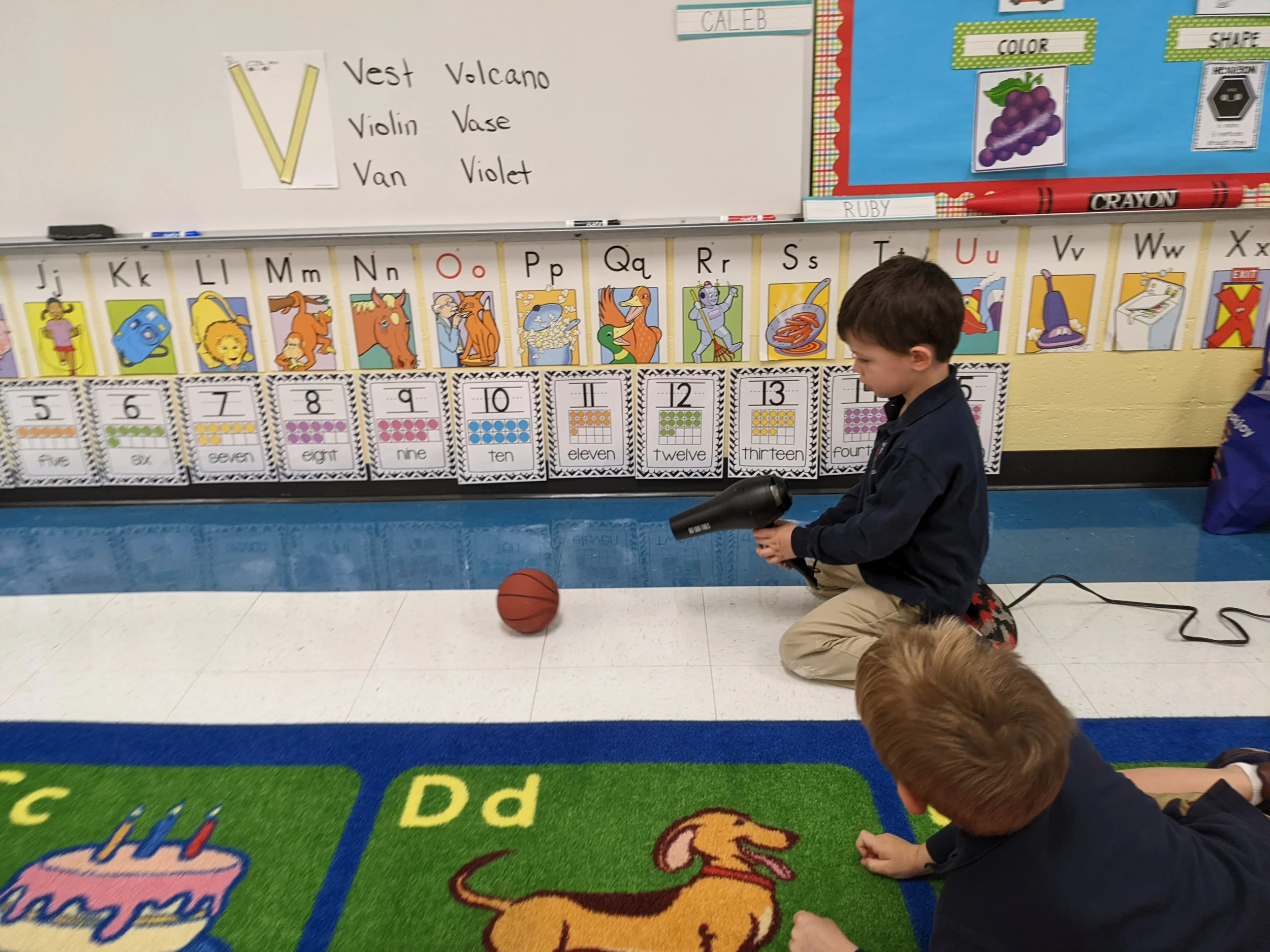Our focus question was who uses balls? We had a chance to build a wrecking ball, play soccer, and tennis. The boys and girls had a blast!
I’m thinking of a shape
This activity is based on a game I've played with my own children. We take turns telling 3 clues about the shape and wear it may be located. This physical activity will help your child develop their mathematical shapes and positional word vocabulary. It was wonderful to see the children cheer as each person found their shape. At home, see if your child can identify 3 dimensional shapes.
Number Wall Ball
This is a fun way to identify numbers. The children were given a number and they had to hit it with the ball.























































































































